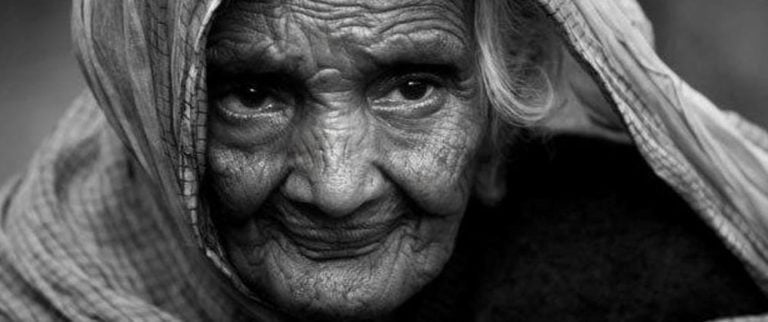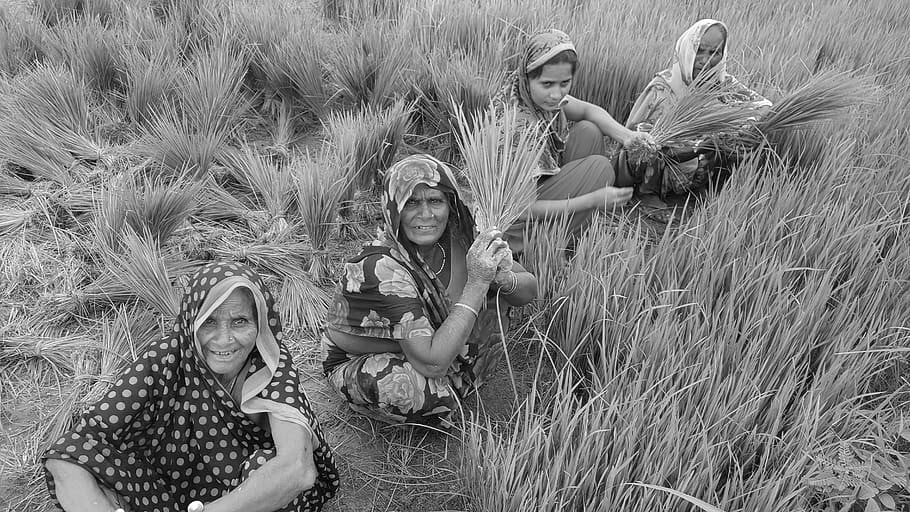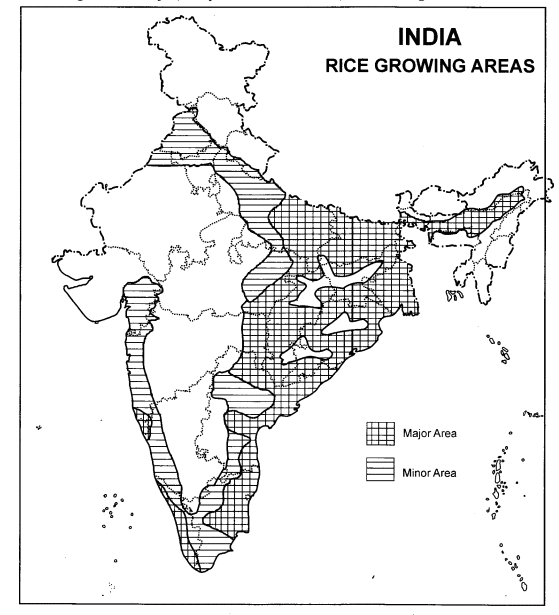Narak Chaturdasi is celebrated for Diwali in Goa. Huge effigies of Narkasur, made of grass and hay, dressed in colorful paper clothes and armed with swords and other armaments, are erected in the days preceding Diwali. Narkasur is paraded in the neighborhood accompanied by drums and songs. After dawn with taunts and insults, Narkasur is beheaded and cremated. Discover Mythology and Diwali rituals of Narakasur in Goa.
Butter lamps and colorful electric bulbs illuminate every corner of India and the scent of incense sticks hangs in the air, mingled with the sounds of fire-crackers, joy, togetherness and hope. Each legend, myth and story of Diwali celebrates the victory of good over evil and light over darkness. It is said the word Diwali originates from the Sanskrit word “Deepavali” meaning “Rows of lighted lamps”. People adorn their homes with Rangoli or Kolam, Akaash kandil’s (Lanterns) and diyas (clay lamps) as they wait for Goddess Lakshmi to visit their homes on Diwali. The celebration of Goddess Laxmi – her birth from an ocean of milk, and her marriage to Lord Vishnu and the triumphant return of Lord Rama to Ayodhya after 14 years in exile are popular across India.
In Goa, however, it is the victory of Lord Krishna over the evil Narakasura that is celebrated. On Choti Diwali or Narkachaturdashi – Krishna and Satyabhama, his consort, kill Narkasur and made the world free from fear.
In this Article
Mythology and Diwali rituals of Narakasura in Goa
Making Narkasur effigies for Narak Chaturdasi in Goa
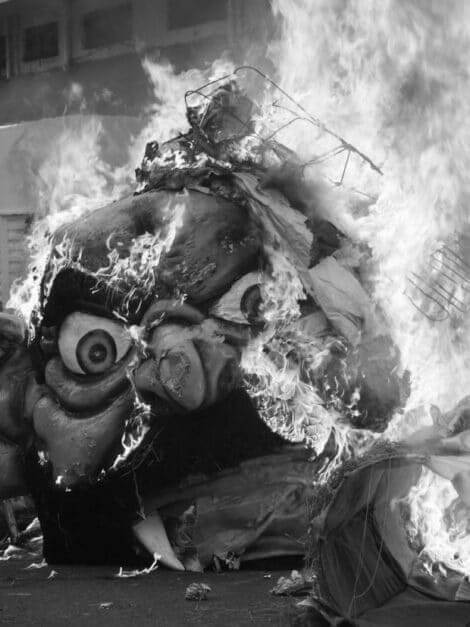
Our neighborhood children in Devbag, South- Goa come together to make gigantic demon statues called Narkasurs which depicts all the evil in the world. The youngsters in our village first make a skeleton using bamboo strips woven together. Then they fill it with grass and dry hay from the field. After the effigy is covered with old newspaper and decorated using bright colored strips and paint.
The mask is also made of paper, which is given horrendous-looking faces. The inside of the effigy is kept hollow, so that they can enter it and make Narkasur dance on the beats of the drum. The Narkasur i taken in a procession after dark and would dance in front of every house – it is eight houses here and they came after midnight. Some firecrackers are also put into the effigy for some excitement, while burning it.
At every crossroad, near a temple or at a central square in each vaddo, we find representations of Narakasura. In the bigger cities and villages of Goa, rallies displaying elaborate Narkasur effigies are held and prizes are later announced for the best one.
For us, the best one is the one the Komarpant boys made here in Devbag, Palolem- South Goa, thanks for the video.
MYTHOLOGY: Narak Chaturdasi — Diwali and the Narkasur Battle
There are various legends pointing to the killing of Narkasur in Goa and India, this is just a glimpse.
Goa: The killing of Narkasur
Legend and mythology has it that in ancient times the demon king Narkasur ruled the beautiful land of Gomantak. He spread terror wherever he went and believed in the policy of blood and gore. People lived in fear and favor. There was fear everywhere. People were helpless against the rule of Narkasur.
The Goan legend associated with Narkasur tells us that this demon king of hell, as the literal translation of Narkasur goes, was an unscrupulous, lecherous, vermin who held sixteen thousand Goan women captive to satiate his lust. This monster called the Narkasur cast wanton destruction over beautiful ancient Goi or Gomantak.
The people of ancient Goa prayed for a rescuer to come and free them from the untold miseries they were suffering at the hands of the demon king and his notorious evil government.
Finally on the dark amavasya night in the month of Ashwin, Lord Krishna descended in Goa with his brilliant army. A bloody battle was fought between Narkasur and Lord Krishna. In this battle Lord Krishna shot his famous Sudharshan Chakra (disc) and severed the evil head of the Narkasur and slit his tongue. Thus the evil demon who ruled Goa met his end in the wee hours of the morning and Lord Krishna smeared demon’s blood on his forehead as a symbol of victory.
To wash away the blood of Narkasur, Lord Krishna was bathed and massaged with scented oils and thus the custom of Abhyangsnan, the early morning bathing with oil is being carried out.
The sixteen thousand Goan women held captive by Narkasur were released from captivity. These women went home and lit earthen diyas (lamps) in their houses, which symbolized the end of darkness (Amavasya) and the beginning of light (Diwali) in Goa.
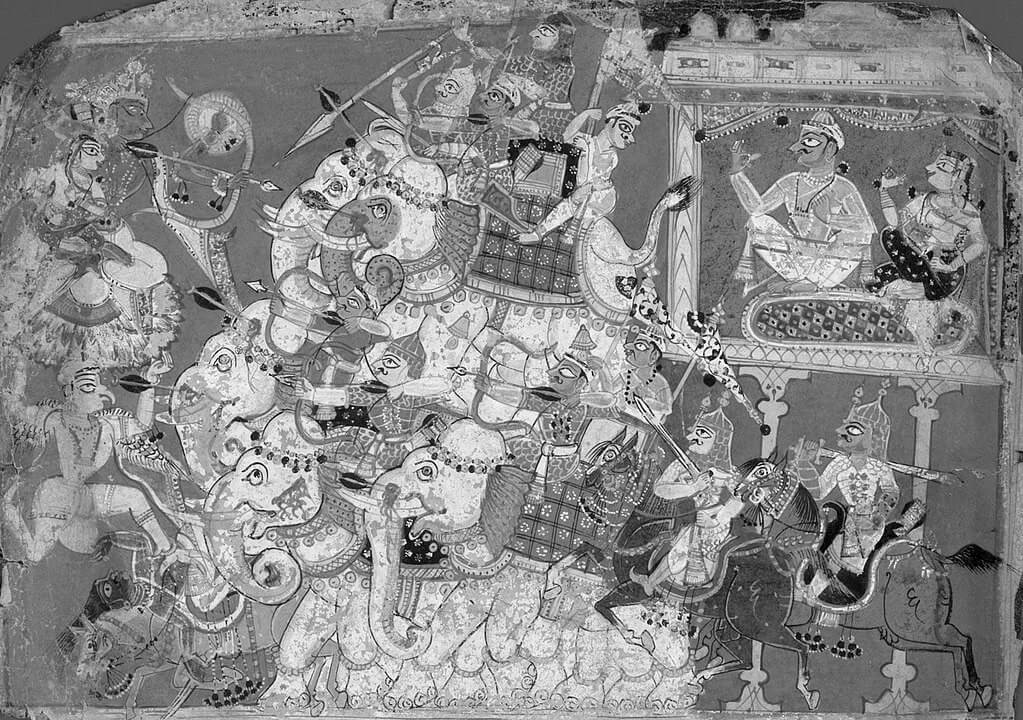
Assam: Lord Krishna the slayer of Narkasur
According to this version Naraka was the son of the Earth Goddess Bhoodevi (Bhumi Sanskrit: भूमि, also known as Bhudevi and Vasundhara) and Lord Vishnu in his Varaha avatar. Therefore his other name is Bhaumasura. He established the kingdom of Pragjyotisha in Assam.
In association with another Asura named Banasura, Narakasura became very evil. Maddened with power, he brought all the kingdoms on earth under his control. His next target was Swargaloka, god Indras home. Even the mighty Indra could not withstand the assault of Narakasura and had to flee. Narakasura thus became the lord of both the heavens and the earth. Addicted to power, he stole the earrings of Aditi, the heavenly mother goddess and kidnapped 16,000 women.
Indra led all the Devtas to Vishnu and asked him to free them from Narakasura. Vishnu promised them that his incarnation of Krishna would solve their problem.
It was foretold that Narakasura would be destroyed by a later incarnation of Vishnu. Therefore his mother sought a boon from Vishnu asking that his son should have a long life and that he should be all powerful. Vishnu granted these boons. But when the evil activities of Narakasura became unbearable, Vishnu took avatar as Krishna.
Aditi, who was a relative of Krishna’s wife Satyabhama approached Satyabhama for help. When Satyabhama heard of the Narakasura’s ill treatment of women and his behavior with Aditi, she was enraged. Satyabhama approached Lord Krishna for permission to wage a war against Narakasura. As promised to the Devas and Aditi, Krishna attacked the great fortress of Narakasura, riding his mount Garuda with wife Satyabhama. The battle was furiously fought. Narakasura possessed 11 Akshauhini (a division of the army), that he unleashed on Krishna. However, the Lord slew them all with little effort.
Krishna also killed Mura, Narakasura’s general. Thus Krishna is called ‘Murāri‘ (the enemy of Mura). In desperation, Narakasura launched his great weapon, sataghini (a thunderbolt) on Krishna. However, it made no impact whatsoever on Krishna. At last, when Narakasura tried to kill the Lord with a trident, Krishna beheaded him with his Sudarshan Chakra (a disc).
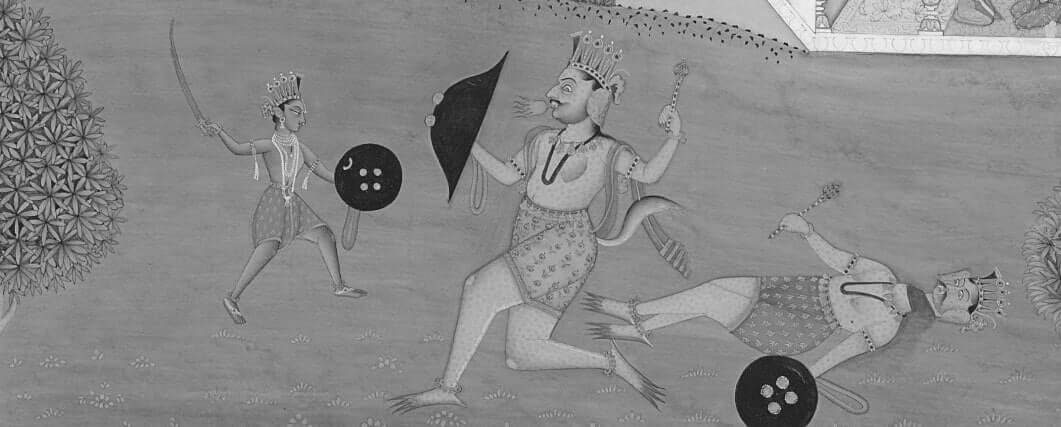
Lord Krishna subsequently married 16,100 maidens who were held captive by Narakasura to save their honor.
Before dying, the Asura requested a boon that his death anniversary should be celebrated by all people on earth. This day is celebrated as ‘Naraka Chaturdashi’ – the second day of Diwali.
Variant: Lord Krishna the slayer of Bhauma
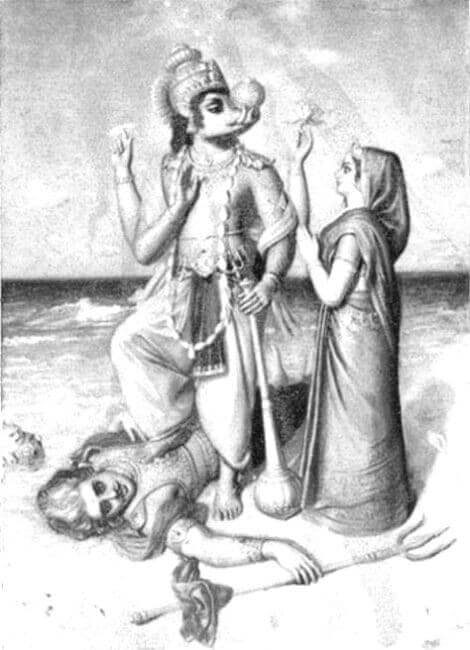
According to Srimad Bhagavatam, Narakasura is also referred to as Bhauma, the son of Bhumi. Bhumi is the Goddess of Earth and fertility, a form of Lakshmi. The later Puranas, including Brahmaputra have mentioned that he was conceived by Bhumi during the Varaha Avatar (wild boar).
He was the ruler of Pragjyotisha (Modern Assam) who had stolen treasures from Devaloka including the earrings of Aditi and kidnapped 16,000 women.
Indra sought the aid of Krishna, the Lord of Dwaraka. Krishna attacks Pragjyotisha, accompanied by one of his spouses Satyabhama and breaks the formidable fortification of the province, fights and kills the commander Mura (thereby earning the epithet Murari). He also kills the seven sons of Bhauma. Bhauma, then attacks Krishna with several missiles, including Shataghni, the spiked weapon, a Shakti, which had once bettered the thunderbolt of Indra and finally, a Trident at which Krishna deploys his Sudarshana Chakra and severs Bhauma’s head.
Heeding the prayers of Bhumi, the mother of Bhauma, Krishna installs Bhauma’s son Bhagadatta as the ruler of Pragjyotisha and retrieves the stolen treasures to return them to their respective rightful owners. He also marries the kidnapped women to facilitate them to have a dignified life ahead.
It is intriguing as Bhagavatam does not explain why Satyabhama accompanied Krishna and why a demoniac son like Bhauma was born to Bhumi (earth goddess )and Maha Vishnu (in his Varaha-Avatar).
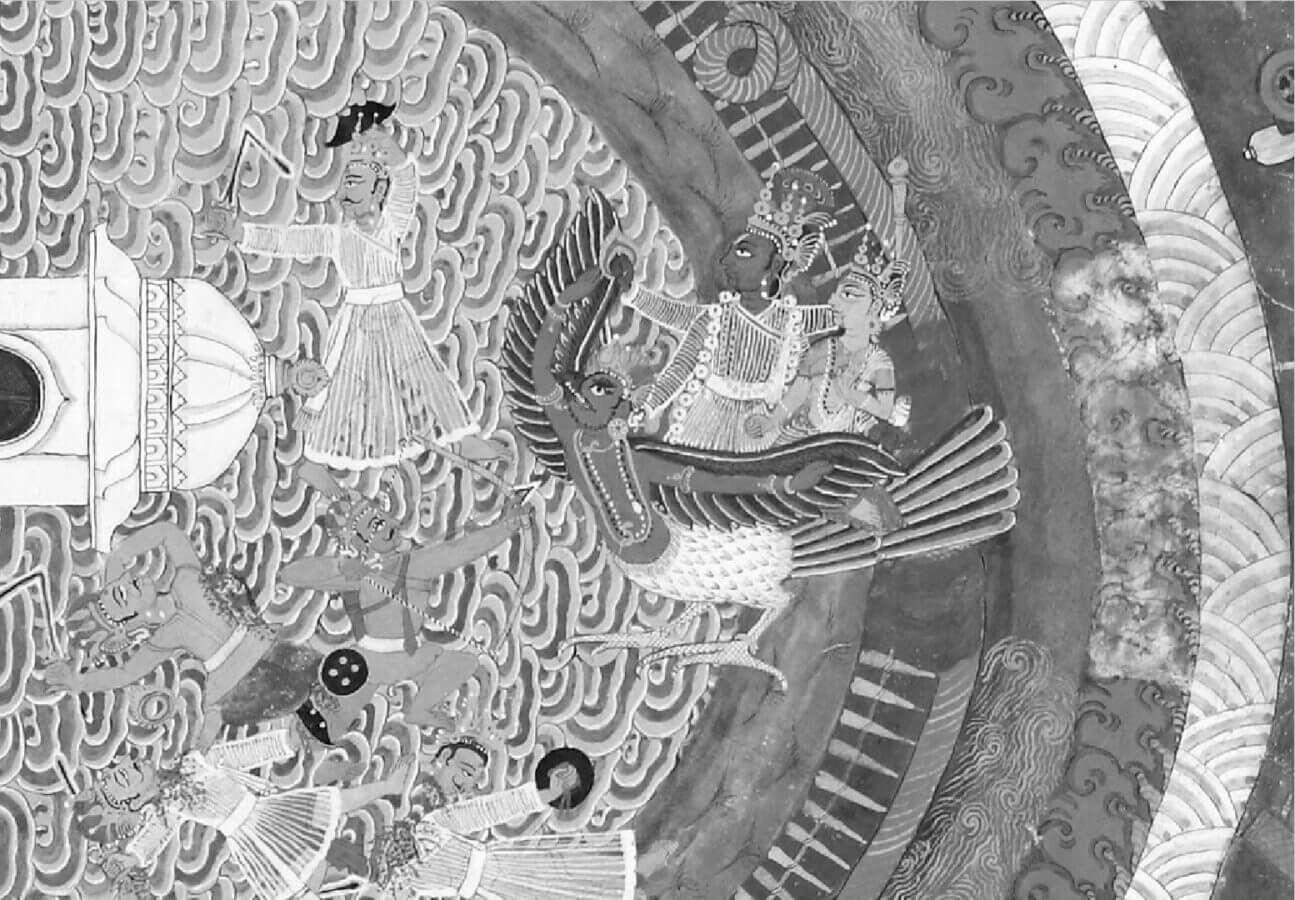
Krishnas wife Satyabhama (Bhumi) kills Narkasur

In Andhra Mahabhagavatam, a 15th Century work composed by Bammera Pothana, Satyabhamas presence is not just ornamental.
When Krishna faints out of fatigue, she engages Bhauma in a fierce battle till Krishna recovers and kills Bhauma with the Sudarshana Chakra. Other South Indian texts narrating this event have extolled Satyabhama as the incarnation of Bhumi .
It is also believed that Bhauma could be killed only in the hands of his own mother, a boon he cleverly elicits taking for granted that a mother cannot kill her own son however wicked he is.
Bhauma thinks that this boon effectively makes him immortal and invincible.
Satyabhama being Bhumi could slay him, personifying female valor.
As legend goes, during the battle between Sri Krishna and Narkasura, the Lord was ‘hurt’ by a Shakti used on him by Narakasura and he feigned unconsciousness. This enraged Sathyabhama who in turn fired arrows at Narakasura killed him finally.
The legend of Narakasura is important in the history of Assam since Narakasura is cited as the progenitor of many dynasties that ruled Kamarupa in historical times.
Narkachaturdashi — Choti Diwali in Goa
Rituals of Diwali, the festival of light
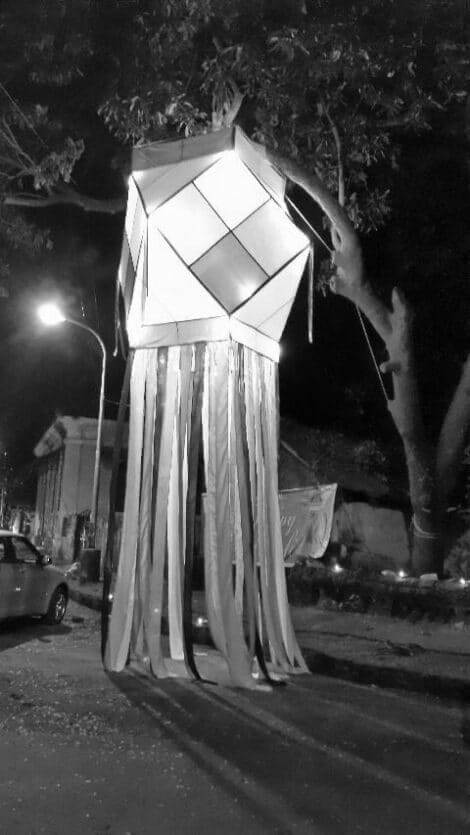
In Goa, Diwali is a tribute to Lord Krishna’s victory over Narkasur and several customs and traditions depict this.
Days before the festival, people start preparing for the festival by cleaning their homes to welcome Goddess Laxmi and are seen shopping for clothing, lanterns, diyas and flowers.
During the days leading up to Divali, and especially on the day of the festival, shops typically reduce their prices with hopes of ending the year with a strong balance. The first customer of any day of the year is often considered a manifestation of Lakshmi, with whom bargaining should not be pressed to the point of losing the sale. The first-customer rule is especially important on Divali, when sales in stores operating on this holiday are often construed as indications of Lakshmi’s favor.
Pontis, or tiny clay pots, are filled with ghee or coconut oil and lit at the wick, symbolizing the triumph of light over darkness. Children come together to make akaashdivos or lanterns that are hung in their homes to welcome Goddess Laxmi who is believed to roam the earth that night. Intricate rangoli patterns adorn the thresholds of every home to encourage the goddess to enter.
Abhyangsnan
Women in Goa wake early on Diwali morning to prepare a special mixture called utnem, made of sandalwood, scented oils and other fragrant ingredients, which are applied to the body before bathing. The family wears new clothes and together conducts the Laxmi Puja, praying for prosperity and success of all.
Dive Dhakavap
Following the Abhyangsnan the ceremonial ritual bath with utnem and oil the unique Dive Dhakavap ritual follows. This tradition, unique to Goa, literally means showing of light through darkness. The wife shows the light to her husband and other male members of the family.

Crushing the bitter karit fruit under the foot
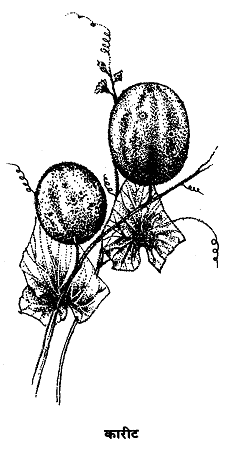
This is followed by crushing of the bitter fruit called karit, kareet or कारटे Kaarate (Cucumis melo var. agrestis) . Karit, the local, bitter wild fruit, is a cucumber-like butter fruit that is mostly found in parts of Maharashtra and Goa around Diwali, and is called Chirate in Marathi.
The crushing of the karit symbolizes the crushing of evil under the feet in token of killing Narakasura, symbolizing evil and removal of ignorance. The little green fruit karit symbolizes also the head of Narakasura. The bitterness of the Carit is tasted first and this is quickly followed with jaggery (palm sugar).
To balance all the sweet, rich foods and happiness that are to follow through the Diwali festival, this bitter drop will remind Goans to stay balanced. It is also said that one must taste something bitter to expect something sweet, and this little ritual is symbolic of the same.
After prayers the family sits down feasting on five different dishes made of beaten rice or fov. These include
- batata fov (a savoury dish with potato),
- doodhantle fov (a sweet dish with milk),
- buttermilk or curd fov,
- rosantle fov (made with coconut milk) and
- kalayle fov (a savoury dish mixed by hand).
Snacks are aplenty and we buy them at the Divali market in Chaudi, where the woman empowering group sells home made delicacies. There’s the ever-present churmure – a sweet-spicy sticky mixture of rice crispies or cornflakes, jaggery, grams, peanuts, chilly powder, ginger juice and sesame seeds; the crispy chakli, the sweet shankarpale and sweet laddhus.
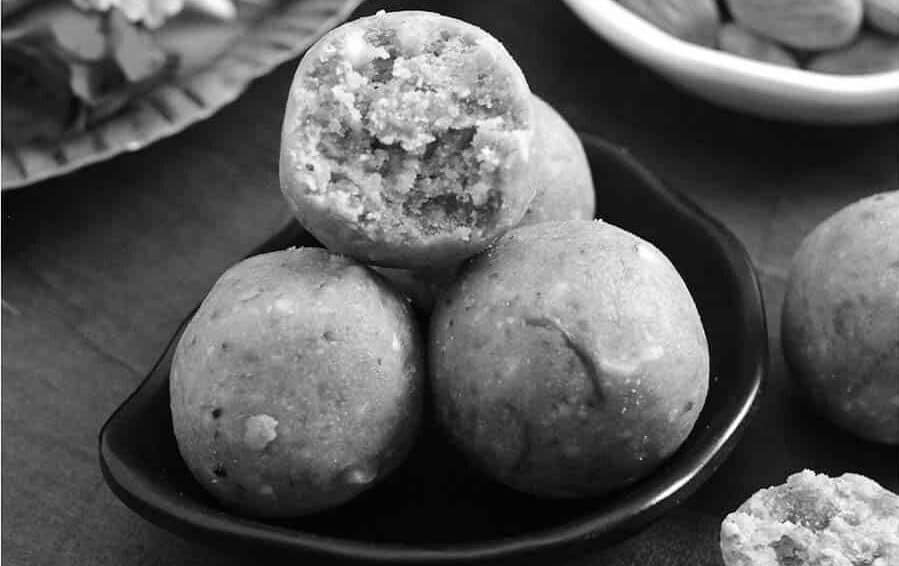
HISTORY: The mythological stories of Diwali share a common theme – The triumph of justice
The mythological stories of Diwali share a common theme – The triumph of justice. Historically, the origin of Diwali can be traced back to ancient India, when it was probably an important harvest festival for rice and the last harvest before winter. Farmers can be seen worshiping their fields and their tools for a better harvest during the festival. Deepavali is celebrated at the end of the monsoon season when the weather is pleasant. It is mentioned in Sanskrit texts such as the Padma Purana, the Skanda Purana both completed in second half of 1st millennium AD but believed to have been expanded from a core text from an earlier era.
Also believed to be a a Hindu festival of wealth and prosperity, in different parts of the country this sparkling festival is celebrated in different ways. Unlike other festivals, such as Mahunag Mela, Ganesh Chaturti, Pada Yatras, Thaipusam, Diwali is celebrated in all parts of India.
Diwali follows the lunar calendar and starts on the 14th day of the lunar month of Ashvin and extends to the second day of the lunar month of Kartik. It usually falls around the end of October and the beginning of November. The festivities of Deepawali is spread across five-days and each day has its own significance and rituals that are followed in different parts of India differently.
Every religion marks a historical event and any historical event and story as a starting point. Deepavali is also associated with such historical events and stories. Their central theme point out to the classic truth of the victory of the good over the evil, the mode of their presentation and the characters differ.
Diwali, being the festival of lights, lighting the lamp of knowledge within all means to understand and reflect upon the significant purpose of each of the five days of festivities.
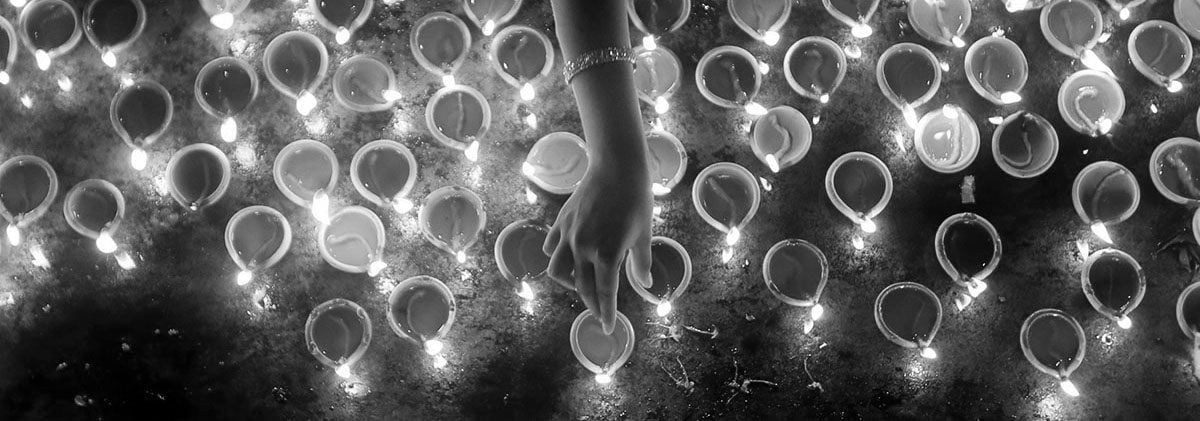
DAY I
Dhantheras
Dhanteras (Hindi: धनतेरस), also known as Dhanatrayodashi (Sanskrit: धनत्रयोदशी), it derived from Dhan meaning wealth and teras meaning thirteenth, marks the thirteenth day of the dark fortnight of Kartik and the beginning of Diwali. It is is a symbol of annual renewal, cleansing and an auspicious beginning for the new year. Dhanteras is considered auspicious to buy gold or silver or new utensils.
Some worship Kubera, the god of wealth and yet others worship Dhanavantari, the god of medicine. But one of the more fascinating rituals is to play the game of dice and gamble in Krishna temples across Vrindavan in the North and coastal Andhra and Karnataka in the south. Two groups of priests take on the roles of representing Krishna and Radha and play the game of dice.

Yama Deepam
On the first day of the festival some Indians also make an offering to the god of death, Yama, after praying for expiation of sins. यम, Yama also known as Yamaraja, Kala, and Dharmaraja is the Hindu god of justice, responsible for the dispensation of law and punishment of sinners in his abode, Yamaloka.
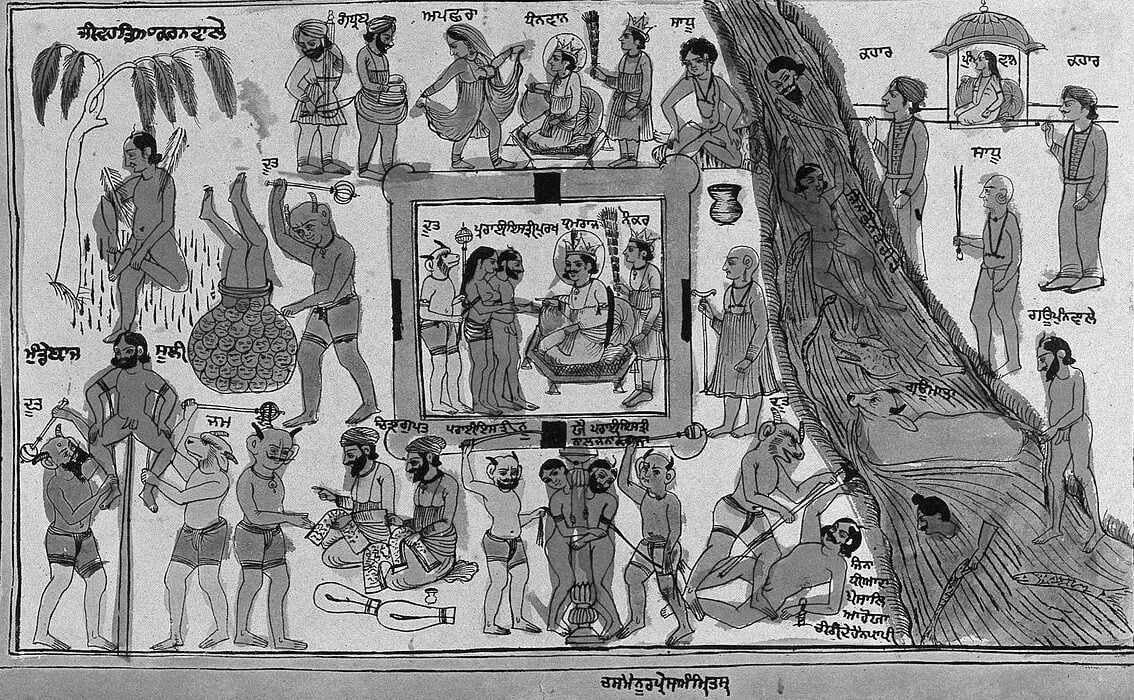
One lights a lamp to “the underworld” where Yama lives. After feasting, rows of lamps are lighted in the evening on ledges and external places of houses. Temples and public places are also illuminated.
Some Hindus observe Yama Deepa on the second night before the main day of Diwali.
DAY II
CHOTI DIWALI
Naraka Chaturdashi
This day is commonly celebrated as Diwali in Tamil Nadu, Goa, Maharashhtra and Karnataka. On this day Lord Krishna killed the demon king Narakasur and rescued 16,000 women from his captivity.
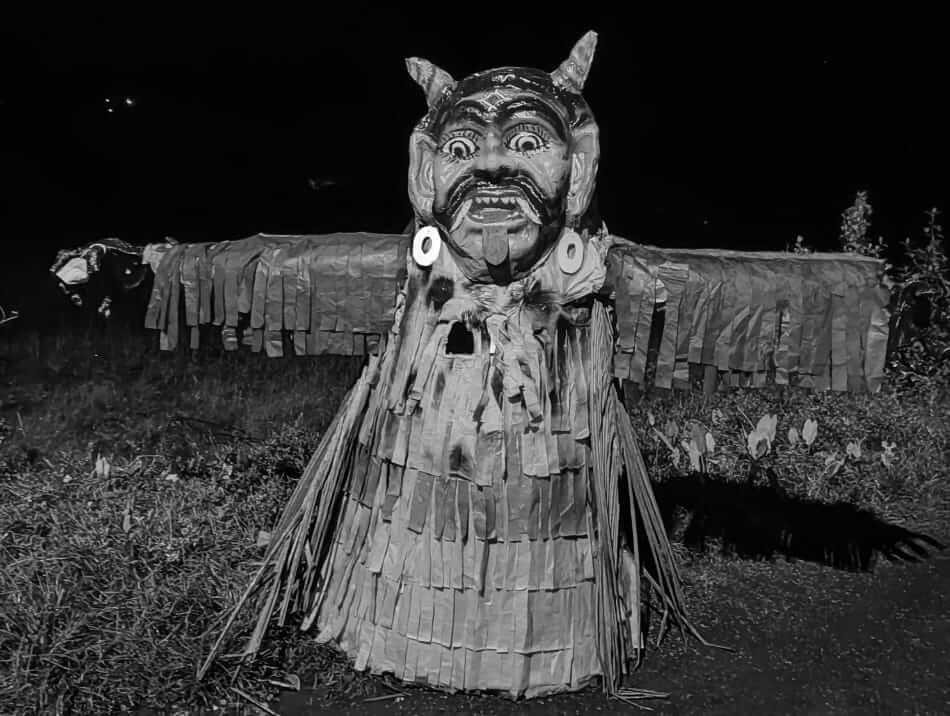
Traditionally, Marathi Hindus and South Indian Hindus receive an oil massage from the elders in the family and then take a ritual bath, Abhyangsnan (milk ritual/sacrifice), all before sunrise. Many visit their favorite Hindu temple.
In Karnataka the festival of Deepavali starts from Naraka Chathurdashi with early morning traditional oil bath, a fire ceremony – Aarthi followed by bursting firecrackers and extends till Bali Padyami which is the main day of Deepavali celebration when cows, oxen and bulls are decorated and worshiped.

Kali Chaudas

In West Bengal the festival is dedicated to the worship of Mother Kali, the dark goddess of strength. It is believed that Narakasura was killed by Kali. Hence Naraka Chaturdashi is called ‘Kali Chaudas’ .
This myth is mentioned in the Kalika Purana (10th century AD), which was composed in Assam. Motivated by his carnal desire, the Asura Naraka wanted to marry Devi Kamakhya. Naraka proposed to Kamakhya who playfully put a condition before him that she would marry him if he was able to build a staircase from the bottom of the Nilachal Hill to the temple within one night before the cock crows to indicate dawn.
Naraka took it as a challenge and tried all with his might to do this huge task. He was almost about to accomplish the task before it was dawn. When Kamakhya Devi got this news, panic-stricken she strangled a cock and made it crow untimely to give the impression of dawn to Naraka. Duped by the trick Naraka thought that it was a futile job and left it half way through. Later he chased the cock and killed it. When the goddess knows about this, She creates an illusion of dawn, before it was dawn and the cock crows. The asura thus leaves the task incomplete and was killed by Goddess Kali on the Chaturdasi day.
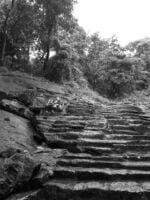
Now the place is known as Kukurakata situated in the district of Darrang. The incomplete staircase is also known as Mekhelauja Path.
Some Hindus observe Kali Chaudas on the third day of Diwali. Kali and Durga are fierce forms the mother goddess.
Lord Hanuman
Especially in Gujarat devotees pray to Hanuman. It coincides with the day of Kali Chaudas. It is believed that spirits roam around on the night of Kali Chaudas, and Hanuman, who is the deity of strength, power, and protection, is worshiped to seek protection from the spirits.
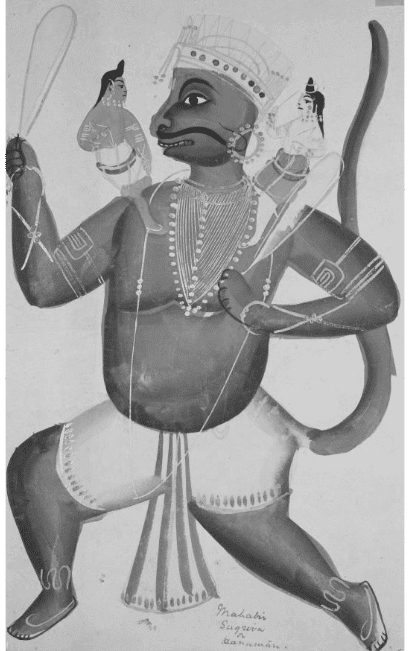
Hanuman Jayanti
There are different beliefs regarding the birth date of Lord Hanuman in the Hindu mythology. Some celebrate it in the month of Chaitra and some on the occasion of Choti Diwali in India. As Lord Hanuman was immensely close to Lord Rama, therefore, most of the people celebrate Hanuman Jayanti on the occasion of Choti Diwali with great enthusiasm. They offer prayers to the God with tulsi leaves, orange coloured sindoor, and flowers along with Ganga jal, chana murki and ladoos and recite Hanuman Chalisa.
DAY III
DIWALI
This is the day when Hindu, Jain and Sikh temples and homes are aglow with lights, thereby making it the “festival of lights”.
Lakshman, Rama and Sita come home to Ayodhya
According to the epic Ramayana, it was the new moon day of Kartik when Lord Ram, Ma Sita and Lakshman returned to Ayodhya after vanquishing Ravana and conquering Lanka. The citizens of Ayodhya decorated the entire city with the earthen lamps and illuminated it like never before.

Lord Rama was a great warrior King who was exiled by his father Dashratha, the King of Ayodhya, along with his wife Sita and his younger brother Lakshman. On his wife’s insistence Lord Rama returned to his Kingdom Ayodhya after 14 years of exile. He put an end to the demon Ravana of Lanka who was a great Pundit, highly learned but still evil dominated his mind. Hanuman and his troops helped free his wife from Ravanas palace. Rama returned to Ayodhya, there the people welcomed them by lighting rows of clay lamps. So, it is a homecoming and an occasion in honor of Rama’s victory over Ravana; of Truth’s victory over Evil.
Lakshmi Puja
Lakshmi, the goddess of wealth, is worshiped; in West Bengal Kali is worshiped instead.
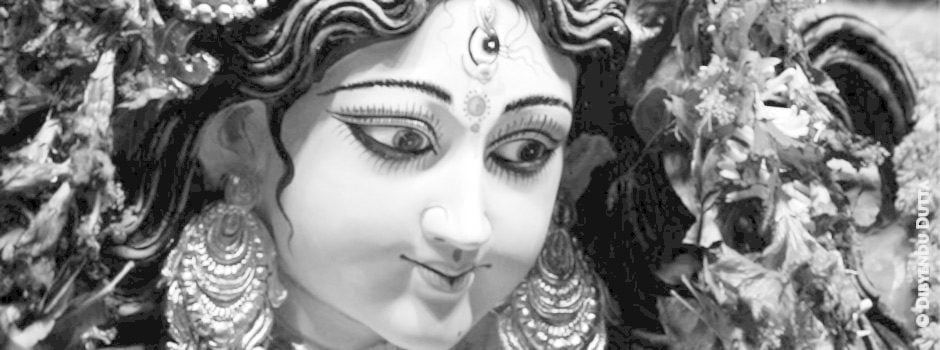
Lights are also lit on this day, when late at night a huge racket is created with drums and such to drive away Alakshmi, Lakshmi’s (or Kali’s) inauspicious counterpart. In fact, by tradition every day of Divali is filled with the sounds of firecrackers. In fact the use of fireworks in India started in the 15th century only.
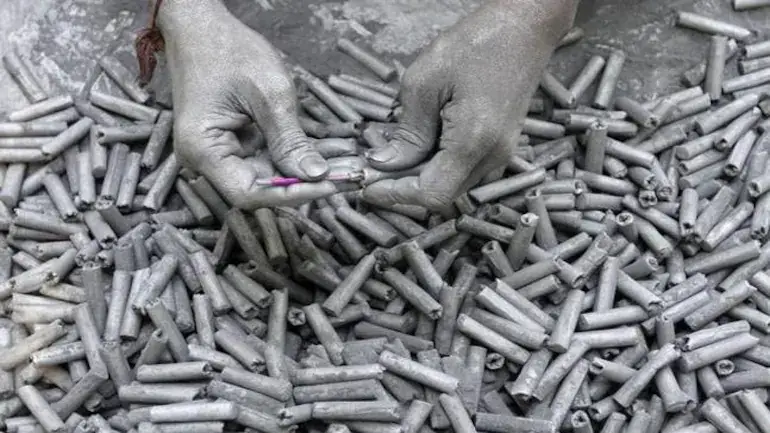
All the rituals of Diwali have a significance and a story to tell. The illumination of homes with lights and the skies with firecrackers is an expression of obeisance to the heavens for the attainment of health, wealth, knowledge, peace and prosperity.
According to one belief, the sound of fire-crackers are an indication of the joy of the people living on earth, making the gods aware of their plentiful state. Still another possible reason has a more scientific basis: the fumes produced by the crackers kill a lot of insects and mosquitoes, found in plenty after the rains.
Goddess Lakshmi’s Birthday
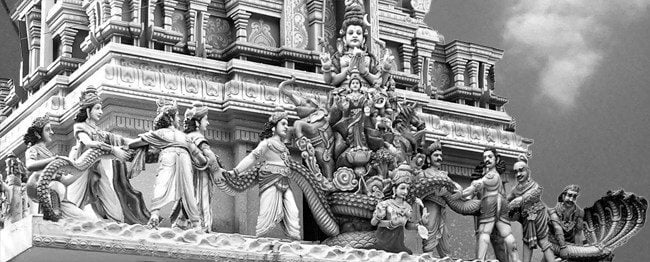
The Goddess of wealth, Lakshmi incarnated on the new moon day (amaavasyaa) of the Kartik month during the churning of the ocean (samudra-manthan), hence the association of Diwali with Lakshmi.
Lord Ganesha, the elephant-headed God, the symbol of auspiciousness and wisdom, is also worshiped with Goddess Lakshmi in most Hindu homes.
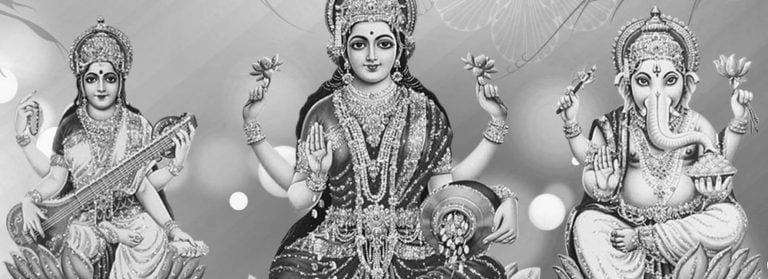
Vishnu Rescued Lakshmi
On this very day (Diwali day), Lord Vishnu in his fifth incarnation as Vaman-avtaara rescued Lakshmi from the prison of King Bali and this is another reason of worshiping Ma Lakshmi on Diwali.
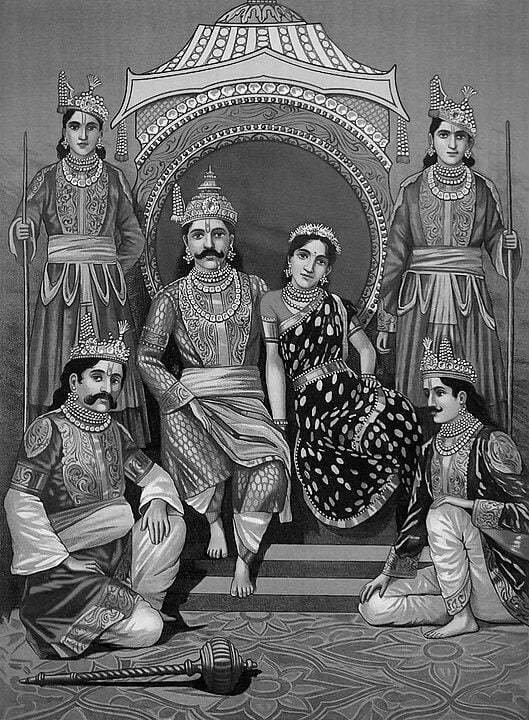
The Return of the Pandavas
According to the epic Mahabharata, it was Kartik Amavashya when the Pandavas appeared from their 12 years of banishment as a result of their defeat in the hands of the Kauravas at the game of dice (gambling).
Pandavas पाण्डव refers to the five brothers of Yudhishthira, Bhima, Arjuna, Nakula and Sahadeva, who are the five acknowledged sons of Pandu.
The day is celebrated by lighting earthen lamps.
Coronation of Vikramaditya
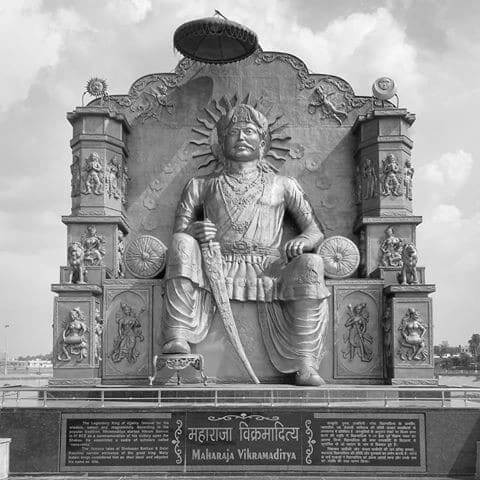
One of the greatest Hindu King Vikramaditya was coroneted on the Diwali day, hence Diwali became a historical event as well.
30 feet statue of Indian King Vikramaditya at Vikram Teela behind Mahakal Temple in the Indian holy city of Ujjain, Madhya Pradesh.
Sikh Diwali — Bandi Chhor Divas
The third Sikh Guru Amar Das institutionalized Diwali as a Day when all Sikhs would gather to receive the Gurus blessings.
In 1577, the foundation stone of the Golden Temple at Amritsar was laid on Diwali.
In 1619, the sixth Sikh Guru Hargobind, who was held by the Mughal Emperor Jahengir, was released from the Gwalior fort along with 52 kings.
Popular legends state that when he was freed, Guru Hargobind tricked the Mughal emperor into allowing him to bring out as many men as could hold onto the hem of his cloak and, in this way, helped release 52 other prisoners who held onto 52 threads coming off of his garment. Guru Gobind Ji went to Harmandhir Sahib -the golden temple- after coming back from the prison and people celebrated freedom of their Guru by lighting the entire city and firing crackers. He was then started to be called Bandi-Chhor which means the liberator and hence they even call it Bandi-Chhor Divas.
Bandi Chhor Divas or Diwali is also celebrated as the martyrdom of an elder Sikh scholar and strategist Bhai Mani Singh Ji in the year 1737. He refused to pay tax on this day which was levied on any non- muslim person by Mughal emperor over the meeting of Khalsa, the community that considers Sikhism as its faith, as well as a special group initiated by Sikhs which dates back to late 16th century.
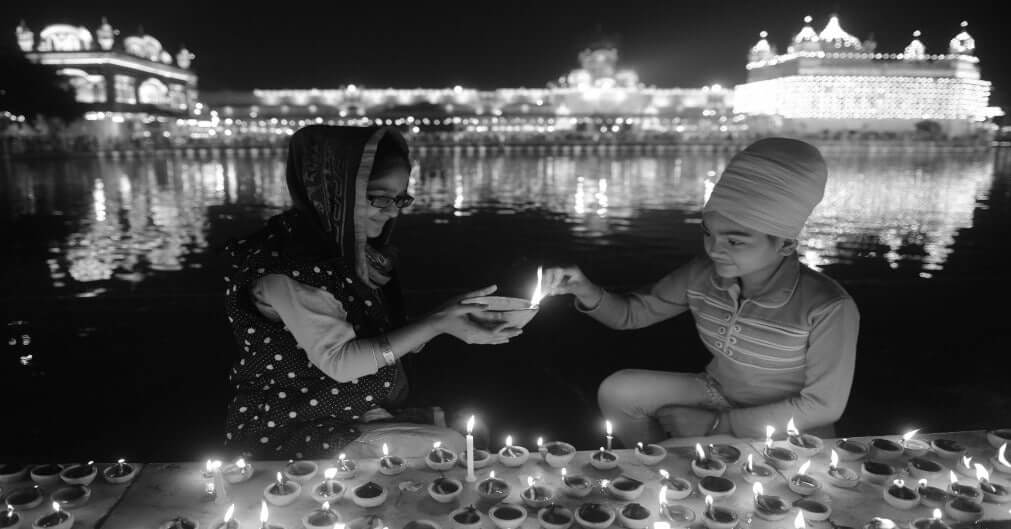
Jain Diwali — Mahavira Nirvan Diwas
Diwali is celebrated in Jainism to remember Bhagwan Mahavira, last Jain Tirthankar, as he attained Nirvana at Chaturdashi in the month of Kartika at Pavapuri on 15th of October, 527 BC. It is also celebrated as the beginning of New Year from the 4th day of Diwali.
Dhanteras
Before His nirvana, Bhagwan Mahavira started giving his last sermons on this day. Thus the day was known as Dhanya. Now it is called as Dhan as too much importance is attached to wealth.
Kali Chaudas
Bhagwan spoke continuously for 48 hours. His last sermons are recorded in one of our Aagams called the uttaradhyana sutra on this day.
Divali
Bhagwan left this world and attained Nirvana at Pavapuri. The light ceased and the whole world was enveloped in pitch darkness. Gods dispelled it with bright gems and humans lit earthen lamps. Lamps are lit to symbolize the dispelling of ignorance.
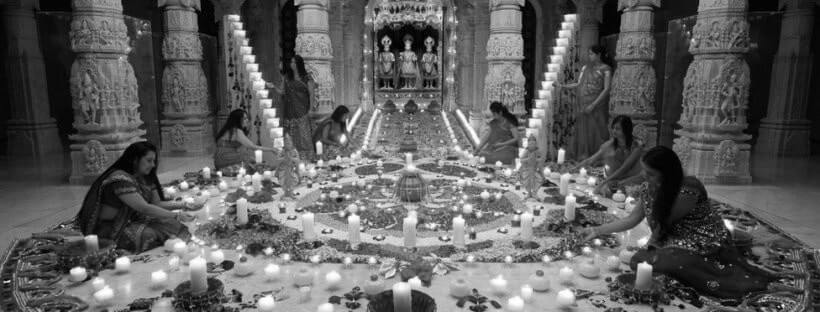
Bestu Varsh
Gautam swami, the chief disciple of Bhagwan Mahavira attained Keval Gyana – omniscience in Jainism and is roughly translated as complete understanding or supreme wisdom, on this day.
Bhai Beej
After Bhagwan’s nirvana His brother King Nandivardhan was inconsolable due to grief. His sister, Sudershana called him to her house and comforted by giving him religious knowledge on this day.
Buddhist Diwali — Ashoka Vijayadashmi and Deep Daan Utsav

Diwali is seen to be the day in Buddhism when the emperor Ashoka was converted to Buddhism. It is also called as Ashoka Vijayadashmi in Buddhism and Buddhists are seen to be celebrating this day peacefully by remembering Emperor Ashoka and chanting mantras.
On Deep Daan Utsav buddhist history says that after the Mahaparinirvana of Buddha, his relics were distributed among eight kingdoms — Ajatashatru of Magadha, Licchavis of Vaishali, Sakyas of Kapilvastu, Bulis of Allakappa, Koliyas of Ramgram, Brahmins of Vedas, Mallahas of Pawa, and Kushinagar. King Ashoka brought back these relics to Patliputra. He further ordered the construction of viharas ( resting places for the wandering Buddhist monks), chaityas (temple halls enclosing the stupas), and hospitals in 64,000 different cities to ensure the spread of Buddhism.
Also In Buddhism, after 18 years, Gautam Buddha returned to Kapilavastu with followers on this day.
DAY IV
The fourth day is devoted to the unusual worship of a demon, Bali, the demon king who was vanquished by Vishnu. On the day of Bali it is common for people to gamble, since many believe that this was the day that Parvati defeated her husband, Shiva, in a game of dice.
Bali Pratipada or Bali Padyami
King Bali and Vamana Avatar (the Dwarf)
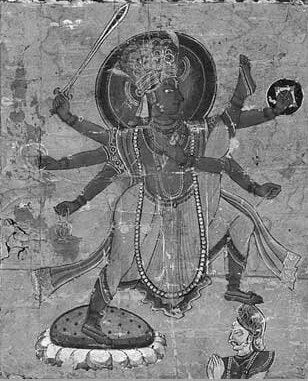
King Bali, was a generous but ambitious ruler. Some of the Gods, especially Indra who feared Bali would take over his kingdom, pleaded Vishnu to check King Bali’s power. Vishnu came to earth in the form of a Vamana (dwarf) dressed as priest. The dwarf approached King Bali and said
“You are the ruler of the three worlds: the Earth, the world above the skies and the underworld. Would you give me the space that I could cover with three strides?”
King Bali laughed. Surely a dwarf could not cover much ground thought the King and agreed to dwarf’s request.
At this point, the dwarf changed into Vishnu and placed his first step on the entire universe. With his second step he quickly occupied earth and now only the place where King Bali was standing was left. There was no place left for Lord Vishnu to step, so King Bali generously offered his own head to step on. King Bali was quite brilliant and very well knew that Vamana was none other than Lord Vishnu. Lord within no time placed his foot on his head and he was soon banished to Patalaloka, the underworld.
Lord Vishnu was so pleased by Bali’s generosity that he granted him with a boon that he could return to Earth for just one day and spread happiness, love and wisdom. Along with a boon King Bali was also granted with the wish of becoming the next Indra. And that the reason why people lit lamps and burst noisy crackers on this day and welcome King Bali on Earth.
Parvati wins the dice game
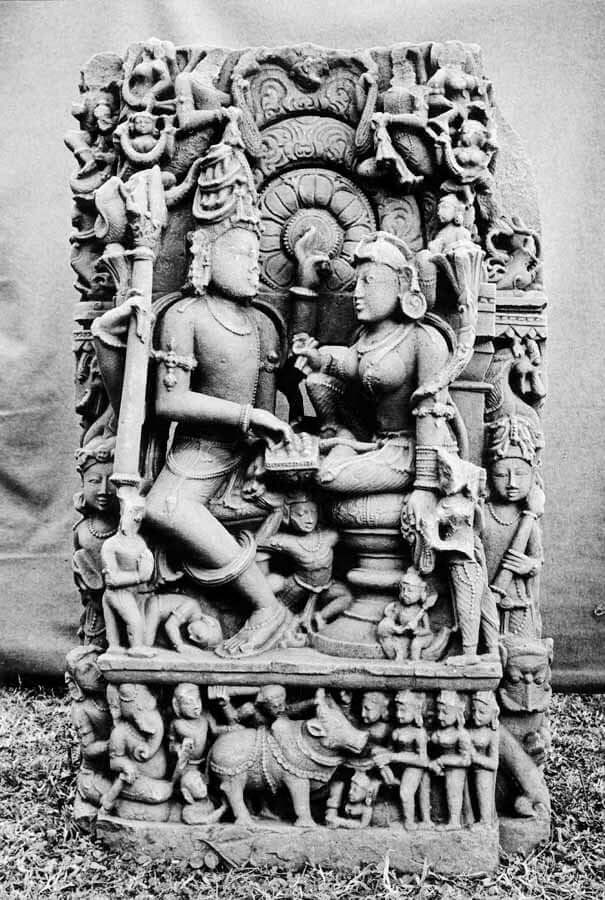
In another interpretation, it is thought to reference the legend of Parvati and her husband Shiva playing a game of dyuta (dice) on a board of twelve squares and thirty pieces, Parvati wins. Shiva surrenders his shirt and adornments to her, rendering him naked.
The Puranic tradition insists that the entire world is created as a result of this divine play between Shiva and Parvati, representing Purusha and Prakriti (Purusha, The Universal Cosmic Male and Prakriti, Mother Nature) , with each move of the players mirroring different states of the world, potential or realized. The popular Kashikhanda episode of the Skanda Purana attests thus:
“O God of Gods, your game is the whole universe
The houses on the gaming board, O Lord, are the twelve months,
The dark and light pieces are the days of the moon,
Of which there are twice fifteen in month, the two dice are two paths of the sun
The two outcomes, victory and defeat, are called Creation and Dissolution.
When Devi wins there is Emanation,
When Dhurjati (Shiva) wins there is Reabsorption.”
This day ritually celebrates the bond between the wife and husband, and in some Hindu communities, husbands will celebrate this with gifts to their wives. In other regions, parents invite a newly married daughter, or son, together with their spouses to a festive meal and give them gifts.
Govardhan puja
On this 4th day of Diwali cows and bulls are worshiped, as is a pile of food that represents the hill Govardhana, which Krishna lifted to protect his people and cattle from a storm. People also pass under a rope of grass tied to a pole or tree in order to assure safe journeys.
Krishna and The Mountain
In the village of Gokula, many years ago, the people prayed to the God Indra. They believed that Indra sent the rains, which made their crops grow. But Krishna came along and persuaded the people to worship the mountain Govardhan, because the mountain and the land around it were fertile. This did not please Indra. He sent thunder and torrential rain down on the village. The people cried to Krishna to help. Krishna saved the villagers by lifting the top of the mountain with his finger.

The offering of food to God on this day of Diwali is a reminder to Hindus of the importance of food and it is a time for being thankful to God for the bounty of nature.
Vishwakarma puja
The artisan Hindu and Sikh community celebrates the fourth day as the Vishwakarma puja day. Vishwakarma is the presiding Hindu deity for those in architecture, building, manufacturing, textile work and crafts trades. The looms, tools of trade, machines and workplaces are cleaned and prayers offered to these livelihood means.
DAY V
Bhratri Dooj Bhai Duj
The final day is a brother and sister day, when brothers are invited to the homes of their sisters for feasting.
This festive day is interpreted by some to symbolize Yama’s sister Yamuna welcoming Yama with a tilaka, while others interpret it as the arrival of Krishna at his sister’s, Subhadra, place after defeating Narakasura. Subhadra welcomes him with a tilaka on his forehead.
It is traditional for sisters apply tilak (three marks) on their brothers’ foreheads, and pray for their prosperity and longevity. In turn, the brother promises to protect his sister. It’s also customary to offer sweets to siblings.
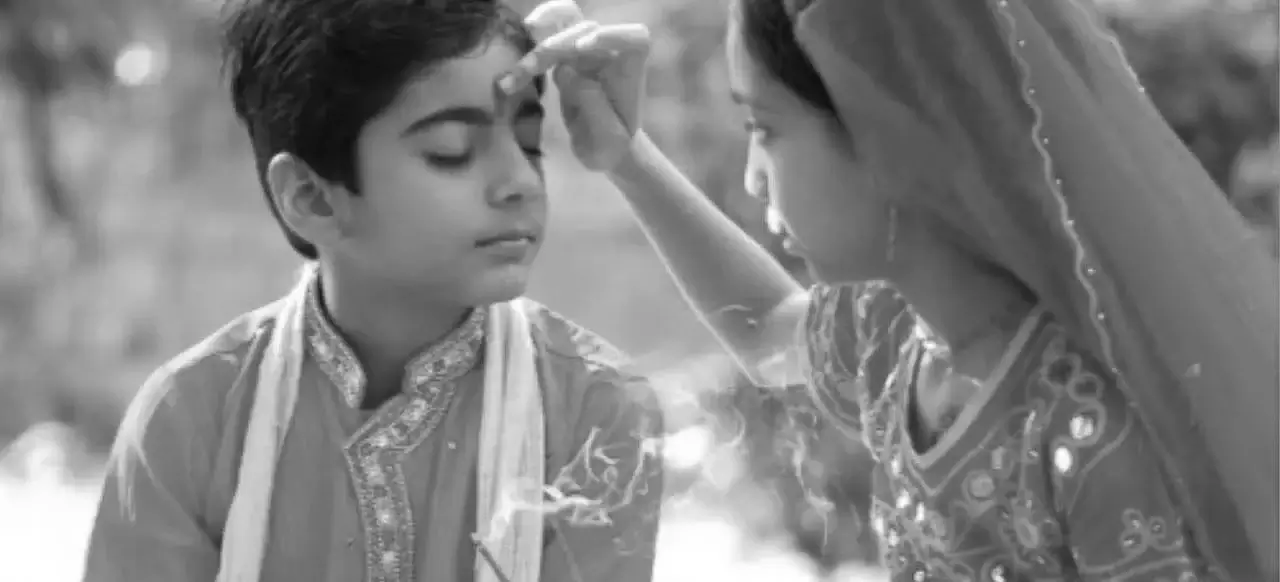
Vhodli Diwali or Tulsi Lagn
The close of Diwali festivities in Goa is marked by Vhodli Diwali or Tulsi Lagn – the wedding of the Holy Basil. It commemorates the marriage of the Goddess Tulsi, a manifestation of Goddess Laxmi, to Lord Vishnu. In Goa, however, it marks also the beginning of the zatra and wedding season.
Temples across the state begin celebrations honoring their deities, a pilgrimage of sorts where families return home to their villages. Zatras are marked by processions of the deities on a special palanquin, prayers, lots of lights and sweets. These zatras will continue until the Shigmo festival in spring.
Diwali in Goa and India isn’t just a single-day affair. It’s a celebration that brings in light and festivities that continue through the months that follow.
Diwali is an official holiday in Nepal, India, Sri Lanka, Bangladesh, Myanmar, Mauritius, Guyana, Trinidad and Tobago, Suriname, Malaysia, Singapore, Fiji and Pakistan.
Wishing all of you all a Happy Diwali
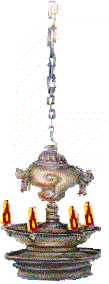
Learn more about festivals of India
~ ○ ~
Keep exploring:
Works Cited & Multimedia Sources
- Bak Kun Bae, ed. Nagananda of Harsa. Delhi: Motilal Banarsidass. 1992.
- Edward C. Sachau, ed., and tr. Alberuni’s India. New Delhi: S. Chand & CO., 1964.
- Gode, P.K. ‘Studies in the History of Hindu Festivals—Some Notes on the History of Divali Festival (Between c. A.D. 50 and 1945).’ In P.K. Gode Studies. Vol.V. Poona: Prof. P.K. Gode Collected Works Publication Committee. 1960.
- Hazra, R.C. Studies in the Puranic Records on Hindu Rites and Customs. University of Dacca. 1940.
- http://www.diwalifestival.org/diwali-in-history.html Slightly edited by Manu Shah to make it more readable.
- https://mythnosis.wordpress.com/2012/11/12/who-really-killed-narakasura/
- https://www.chivukulas.com/2016/10/the-story-of-death-of-narakasura.html?m=1
- https://web.archive.org/web/20210418113430/https://www.festivalsindia.com/diwali-festival-in-goa-india/
- https://www.forttiracol.in/diwali-goa-narakasura/
- https://www.sahapedia.org/festival-lights-various-religious-and-literary-texts-south-asia
- https://www.slurrp.com/article/the-story-of-karit-how-this-fruit-is-connected-to-lord-krishna%E2%80%99s-victory-over-narkasur-1635924526155
- https://www.templepurohit.com/significance-diwali-celebrations/
- https://www.asiahighlights.com/india/diwali-legends-and-stories
- Iyer Saiswaroopa http://indiafacts.org/krishna-narakasura-tale-dharma-asserting-adharma/
- Jones Constance A. and RyanJames D.. Encyclopedia of Hinduism Encyclopedia of world religions. 2006.
- Read the comic: https://manashsubhaditya.blogspot.com/2012/08/krishna-and-narakasura-graphic-comics_8113.html
- Sakhardande Prajal http://www.navhindtimes.com/story.php?story=2008102612
- More videos on our channel ROADSTORIEZ

